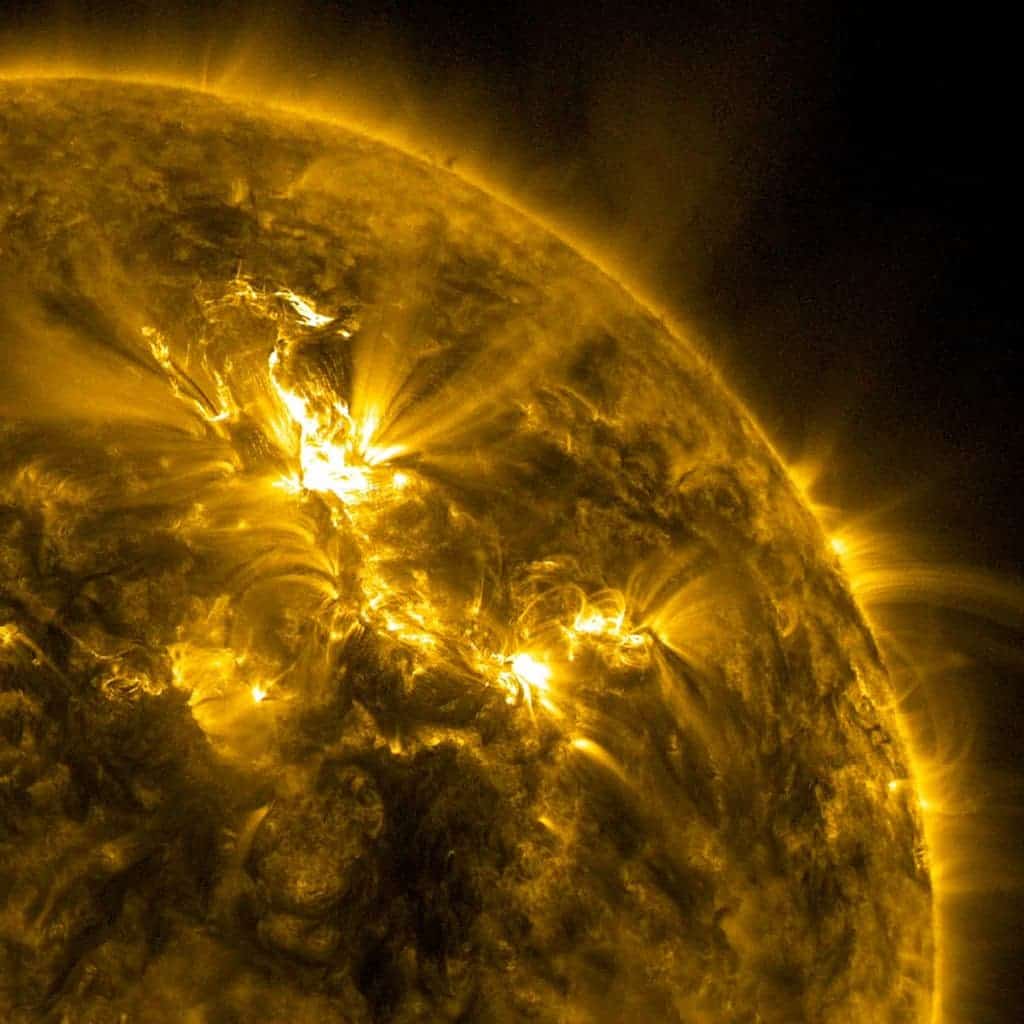A pair of coronal mass ejections (CMEs) emitted by the sun last Sunday have now triggered a severe geomagnetic storm around the globe. At first, only a mild geomagnetic storm was registered after the first wave hit our planet’s magnetosphere. Quickly, however, the storm has intensified to G4 status, or only one notch below the highest level solar storm, according to the NOAA’s Space Weather Prediction Center. This is the most severe solar storm of the current solar cycle.

The amount of magnetic flux that rises up to the Sun’s surface varies with time in a cycle called the solar cycle. This cycle lasts 11 years on average, and during its maximum peak major flares and CMEs are commonplace. This peak was predicted to have occurred in 2013, but this most recent event suggests that the solar cycle #24 is not over yet.
Coronal mass ejections are powerful eruptions near the surface of the sun driven by kinks in the solar magnetic field. When the sun burps, it does so with the strength of 20 million nuclear bombs, ejecting more than a billion tonnes of superheated gas. The resulting shocks ripple through the solar system and can interrupt satellites and power grids on Earth.
We’ve yet to receive any word from NOAA whether or not this G4 storm has caused any outage or satellite malfunction, but I wouldn’t be surprised if any is reported. It’s not all doom and gloom with geomagnetic storms. In fact, we have to thank for some of the most intense and beautiful weather spectacles on Earth: the aurora. Before sunrise, bright auroras were sighted over several northern-tier U.S. states, including Minnesota, Wisconsin, Montana, the Dakotas and Washington. According to Space Weather branch chief Brent Gordon, if the storm is to continue well until Tuesday afternoon, than Northern Lights could be sighted as far south as the middle United States, even Tennessee and Oklahoma. That also means much of Russia and northern Europe, as far south as central Germany and Poland.


